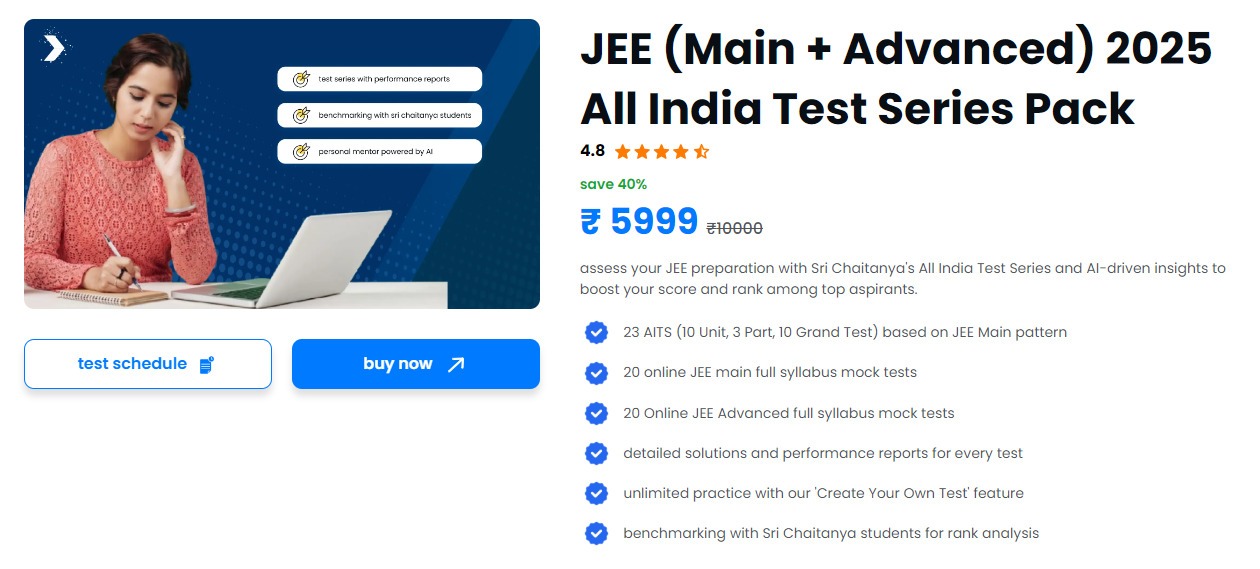JEE Main Previous Year Papers Questions With Solutions Chemistry Alkanes ,Alkenes ,Alkynes and Arenes
1.Which of these will not react with acetylene ?(2002)
1) NaOH 2) Ammonical AgB03
3) Na 4) HCl
Ans.
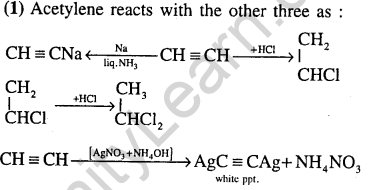
2.What is the product when acetylene reacts with hypochlorous acid ? (2002)
1) CH3COCI 2) C1CH2CH0
3) Cl2CHCHO 4) C1CHCOOH
Ans.
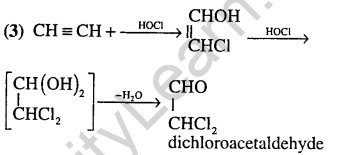
3.Bottles containing C6H5I and C6HSCH2I lost their original tables. They were labelled A and B for testing. A and B were separately taken in test tubes and boiled with NaOH solution. The end solution in each tube was made acidic with dilute HNOa and then some AgN03 solution was added. Substance B gave a yellow’ precipitate. Which one of the following statements is true for this experiment? (2003)
1)AandC6H5CH2I
2)B and C6H5I
3)Addition of HN03 was unnecessary
4) A was C6H5I
Ans.(4) C6H5I will not respond to silver nitrate test because C-I bond has a partial double bond character.
4. Butene-1 may be converted to butane by reaction with (2003)
1) Sn-HCl 2) Zn-Hg
3) Pd /H2 4) Zn- HCl
Ans.(3) Hydrogenation.
5.Which one of the following has the minimum boiling point ? (2004)
1) n-butane 2) isobutane
3) 1-butene 4) 1-butyne
Ans.(2) Lower van der Waals forces.
6.Which one of the following reduced with zinc and hydrochloric acid to give the corresponding hydrocarbon ? (2004)
1) Ethyl acetate 2) Butan-2-one
3) Acetamide 4) Acetic acid
Ans.(2) Total reduction of carbonyl.
7.2 methylbutane on reacting with bromine in the presence of sunlight gives mainly (2005)
1)1- bromo -2 – methylbutane
2)2 – bromo -2 – methylbutane
3)2- bromo -3 – methylbutane
4)1 – bromo -3 – methylbutane
Ans.

8.Acid catalyzed hydration of alkenes except ethene leads to the formation of (2005)
1)Primary alcohol
2)Secondary or tertiary alcohol
3)Mixture of primary and secondary alcohols
4)Mixture of secondary and tertiary alcohols
Ans.(4) concept of hydration.

Ans.(1) Conjugated acid of Cl– is a stronger acid. The acid is HCl.
10.Elimination of bromine from 2-bromobutane results in the formation of- (2005)
1)Equimolar mixture of 1 and 2-butene
2)Predominantly 2-butene
3)Predominantly 1-butene
4)Predominantly 2-butyne
Ans.(2) Saytzeff’s product.
11.HBr reacts with CH2 = CH – OCH3 under anhydrous conditions at room temperature to give
1)CH3CHO and CH3Br
2)BrCH2CHO and CH3OH
3)BrCH2 – CH2 – OCH3
4)H3C – CHBr – OCH3
Ans.(4) Electrophilic addition reaction is more favourable.

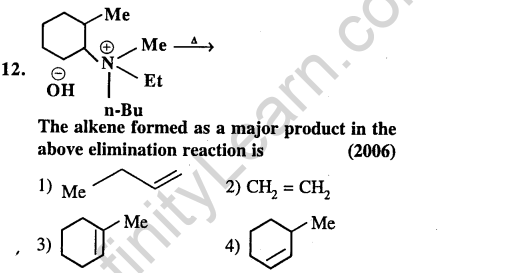
Ans.(2) Ethylene
13.Which of the following reactions will yield 2, 2-dibromopropane ? (2007)
1)CH3 – C = CH + 2HBr —>
2)CH3CH = CHBr + HBr ->
3)CH = CH + 2HBr —>
4)CH3 – CH = CH2 + HBr ->
Ans.
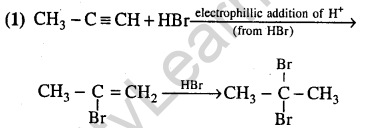
14.The reaction of toluene with Cl2 in presence of FeCl3 gives predominantly (2007)
1)benzoyl chloride
2)benzyl chloride
3)o-and p-chlorotoluene
4)m-chlorotoluene
Ans.
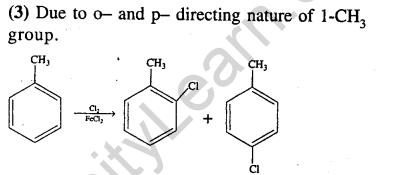
15.Presence of a nitro group in a benzene ring (2007)
1)activates the ring towards electrophilic substitution
2)renders the ring basic .
3)deactivates the ring towards nucleophilic substitution
4)deactivates the ring towards electrophilic substitution
Ans.(4) -N02 group shows -M effect. It withdraws the electron density from the ring and hence deactivate the ring towards electrophilic aromatic substitution.
16.In the following sequence of reactions, the alkene affords the compound ‘B’

Ans.

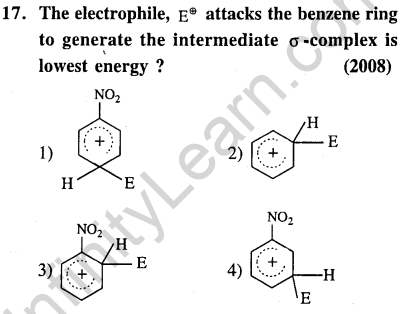
Ans.(2) – N02 is electron withdrawing which will destabilize a-complex.
18.The hydrocarbon which can react with sodium in liquid ammonia is (2008)
1)CH3CH2CH2C=CCH2CH2CH3
2)CH3CH2C =CH .
3)CH3CH = CHCH3
4)CH3CH2C =CCH2CH3
Ans.

19.The treatment of CH3MgX with CH3OC-H produces (2008)

Ans.
![]()
20.One mole of a symmetrical alkene on ozonolysis gives two moles of an aldehyde having a molecular mass of 44u. The alkene is (2010)
1)propene 2) 1-butene 3) 2-butene 4) ethene
Ans.

21.Ozonolysis of an organic compound gives formaldehyde as one of the products. This confirms the presence of : (2011)
1)an isopropyl group
2)an acetylenic triple bond
3)two ethylenic double bonds
4)a vinyl group
Ans.(4) Ozonolysis of an organic compound give formaldehyde when it containing atleast one vinylic double bond. HjC = CH – R.
22.2-Hexyne gives trans-2-hexene on treatment with (2012)
1) Pt/H2 2) Li / NH3
3) Pd / BaS04 4) LiAlH4
Ans.
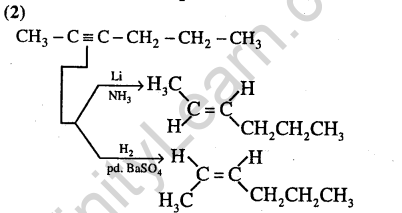
23.The major organic compound formed by the reaction of 1,1,1 – trichloroethane with silver powder is (2014)
1) 2-Butene 2) Acetylene
3) Ethene 4) 2-Butyne
Ans.
![]()
24.Which compound would give 5-keto-2-methyl hexanal upon ozonlysis ?
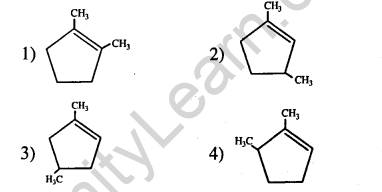
Ans.

JEE Main Home Maths Physics Chemistry




